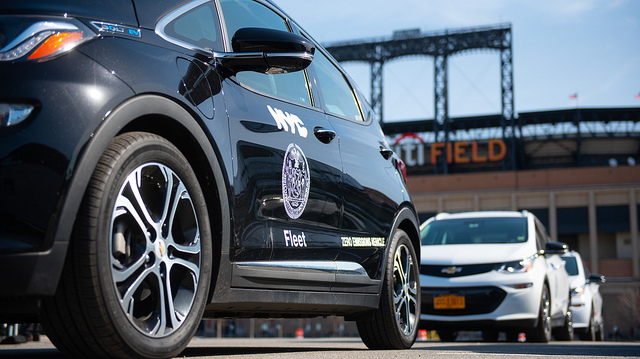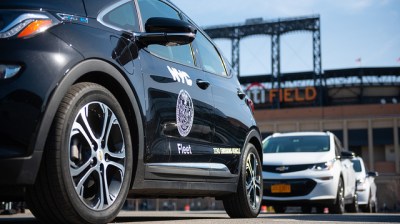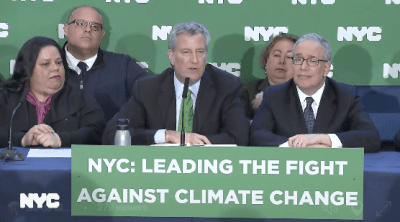De Blasio’s City Fleet Cuts Don’t Come Close to Reducing the Car Problem He Created
City vehicles traveled 25 percent more miles in 2018 than they did the year the mayor took office.
Mayor de Blasio has presided over a 19-percent increase in the number of gas-burning, road-clogging, quality-of-life wrecking cars in the city’s possession. He’s now planning to scale back — but his plan would only get one-fourth of the way back to where the city was when he took over from Mayor Bloomberg.
On Thursday, the avowed global warming opponent promised to reduce the size of the city’s vehicle fleet by 1,000 over the next two years — slimming down, but nowhere close to the size of the fleet when he took office.
Meanwhile, city vehicles traveled 180 million miles during Fiscal Year 2018, an increase of 35 million miles, or 25 percent, from the first year of the de Blasio administration, according to the Department of Citywide Administration Services. The 1,000-car reduction, expected to be complete by June 2021, will only bring that number down by 10 million, city officials said.
But the city has set no benchmarks past that date and the 1,000 vehicle number. It also hasn’t determined which vehicles will be eliminated. That decision will be made in the context of data collected from telematics technology DCAS plans install in all city vehicles to track mileage and usage.
“Through telematics we will have a better ability to study, analyze, how we deploy city fleet in every possible way: The routes that we take — are we going the most direct routes, are there more efficient ways to get from one place to another, to do a park cleaning crew, to do a sanitation route?” Chief Fleet Officer Keith Kerman told reporters on Thursday. “This is a comprehensive effort… to get people out of cars wherever we can, whether that’s the subway, whether that’s telecommuting, whether that’s any other kind of initiative, but also to really think about our routing.”
The details, however, are TBD. The ultimate goal is for 80 percent of the city’s vehicles to be “routinely used,” according to DCAS spokesperson Nick Benson.
“If it’s series of short trips that are being taken that may not require taking a car. … There could be times where you recognize this could be done another way,” Benson said. “If we see that a person is driving from home to the office and back most days, we can see that [they] don’t really need [their car].”
Streetsblog reported in September that the city vehicle fleet had grown exponentially under Mayor de Blasio. That after the Bloomberg administration took concerted steps to slim it down. Compared to the average New Yorker, city employees are more likely to commute into Manhattan via car when given a city vehicle and a parking placard.
Part of the reduction in vehicle miles traveled will be made up of the immediate elimination of 500 employees’ “take-home” vehicle privileges, the city said. There are currently 3,411 city employees allowed to take their vehicles home. That number is also up under the self-styled environmentalist, who has added more than 900 take-home cars while mayor.
City employees, like most New Yorkers, don’t necessarily need their cars to get to and from work and other locations. Bike New York Communications Director Jon Orcutt, who served as DOT Policy Director in the Bloomberg administration, suggested that the city could be more ambitious.
“I’d rather see some agencies try a program where field staff use the subways in defined areas where that makes sense,” Orcutt said.






